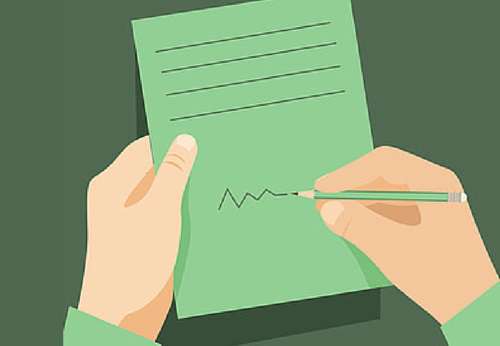However good your
presentation skills are, they will be of only limited use if the presentation itself is not up to scratch. A bad presentation given by a good presenter is like a great actor playing a badly written part. No matter how good the performance is, it cannot hide the bad writing that is at its heart.
Here, we aim to give you a short introduction into some ways in which you can construct effective and powerful presentations. We hope to show you how to write a piece that will come across well to the audience, whatever the standard of the actor saying the lines.
Planning the presentation
The secret to building an effective performance is working out the answer to a series of simple questions:
- Why are you giving the presentation?
- Who are you giving the presentation to?
- What means will you choose to achieve your objectives?
The answer to the first question should be obvious. A presentation is an effective means of communicating an idea to a large number of people. If you are giving a presentation then you obviously have a message which you need to convey. Your objective is to communicate with people, and more specifically to
get your point across. This is the heart and soul of your presentation and you should be able to express this key message in a short and memorable phrase. All the rest of the presentation, all the skills you use, are in service to this end.

What is your
key message that you are hoping to get across? Is it a piece of information, or a request for action, or an attempt at persuasion or building a relationship? It could be any of these. Knowing what you want to do is the first step towards creating an effective and powerful presentation and it is the firm base on which everything else is constructed. Without it the presentation will not be worth listening to.
Question number two considers who you are going to be talking to during your presentation. How will your audience be made up? What sort of people are they? Will they be potential investors from a variety of backgrounds and with a variety of experiences and skill-sets? All of these questions should be carefully considered because they will, to a certain extent, dictate the style of your presentation. What is suitable to one type of audience may go down like the proverbial lead balloon with others.
When we talk about audiences, we talk about Expectations, Goals and Assumptions (EGAs), three key factors which you must take into account. Let us look at each of these important factors individually:
- Expectations: What does your audience expect from you and how can you satisfy them?
- Goals: How can you shape your presentation so it helps your audience achieve their goals?
- Assumptions: Will you audience make assumptions which might make a negative impact on your presentation?
Once you have made up a profile of your audience by taking all these factors into account then you will be able to build up your presentation so that it is tailored to suit.
The last question mentioned above concerns precisely how you will achieve your presentation objectives. A good presentation is more of a conversation than a monologue and it is best delivered in vivid and simple English. Once you have established your common ground and your key themes then move on to creating key sentences in which they can be expressed. These key sentences will give shape to your presentation and make it easier for your audience to take away your message, encapsulated as it is in a series of memorable ‘sound bites'.
We have so far spoken about key messages, key themes, key sentences, goals, objectives, expectations and assumptions. These are all important, but your presentation will suffer if it includes just these things without a firm foundation of hard facts to support them. Your presentation needs facts and they have to be accurate and well researched.
However, you should also be selective about the facts that you use. A presentation is not the place to go into all the details. Instead, it is a resume of an idea, quite accurate but shaped so that it effectively puts across a key message and key themes. You can direct your audience to the more detailed facts and figures which they peruse later.

If you'd like to learn more about delivering presentations, why not take a look at how we can help?
Boost your presentation skills with our online courses.
RRP from $65 – limited time offer just $23.99
Writing the presentation
It is now simply a matter of creating the presentation which achieves all the objectives which you have identified in your preparation. You will shape the structure, perhaps according to a basic plan, outlining all that has to be born in mind.
Always take particular care over your
introduction. It should be memorable and immediately grab your audience. The introduction should also introduce the major idea and themes in a way on which you expand in the rest of the presentation. Be wary of trying to say too much in your opening statement, since there is only so much information people can absorb at a time. Of course you will have rehearsed your presentation before the big day actually comes, so any questions of comprehensibility will have been addressed and any possible confusions ironed out.
We cannot tell you precisely how to write your presentation to suit your audience, but we can remind you of a salient fact: always remember the power of threes. This not a piece of mysticism but an observed fact. Some quirk in the human brain means that sequences of three things are easier to remember than any other number. So try to arrange your key themes in a sequence of three, and your key sentences in a similar way. When you come to your conclusion and you are reiterating your key message, illustrate it with three points. If you do this then you will at least be certain that your audience will go away from the presentation with the nub and gist of what you wanted to say planted firmly in their minds.
Delivering the presentation
After much hard work and effort, the time has come for you to actually deliver the presentation you have poured your heart and soul into. So how can you maintain your cool on the night and win your audience over when you meet them face-to-face?
The first step to take is to ensure that you have rehearsed the presentation several times. Whether you choose to do so in front of the mirror or in front of a supportive colleague or family member is entirely up to you. It is essential that you are fully confident with the structure and pace of the presentation, so that you can relax slightly on the night and deliver the content in good time and in a way that allows the audience to engage with you.
Next, you should remember that some nerves are perfectly natural. Embrace the rush of adrenalin you feel before you step onto the stage and channel this energy towards captivating your audience. Take deep breaths and pause at regular intervals during the presentation, either to take a sip of water or simply to collect your thoughts. Your audience will appreciate the chance to let what you have just said sink in.

In terms of practicalities, familiarise yourself with the presentation venue beforehand by ensuring you know where the power points are and where you can place any props before the presentation. Remember, your audience are human, just like you, so if you do make a mistake on the night, just take it on the chin and carry on as best you can.
There is certainly a great deal which goes into building an effective presentation. Not only do you need to prepare thoroughly, giving much time and thought to both the topic of the presentation and the needs and desires of your audience. You also need to dedicate quality time to writing these ideas down in coherent, succinct sentences which can be used to create the outline of the presentation on the day. Once these tasks are completed, you must then fully prepare yourself for what some might argue is the hardest task of all, namely delivering the presentation to your waiting audience. A cool head, a back up plan and a sense of humour will all come in handy here, as will a friendly and charismatic delivery of the content.
After all this hard work, you should reap the rewards of an effective presentation, whether this is making the right business connections, persuading people to buy a product or, perhaps the hardest of all, winning people over to a new point of view.

If you'd like to learn more about delivering presentations, why not take a look at how we can help?
Boost your presentation skills with our online courses.
RRP from $65 – limited time offer just $23.99




























